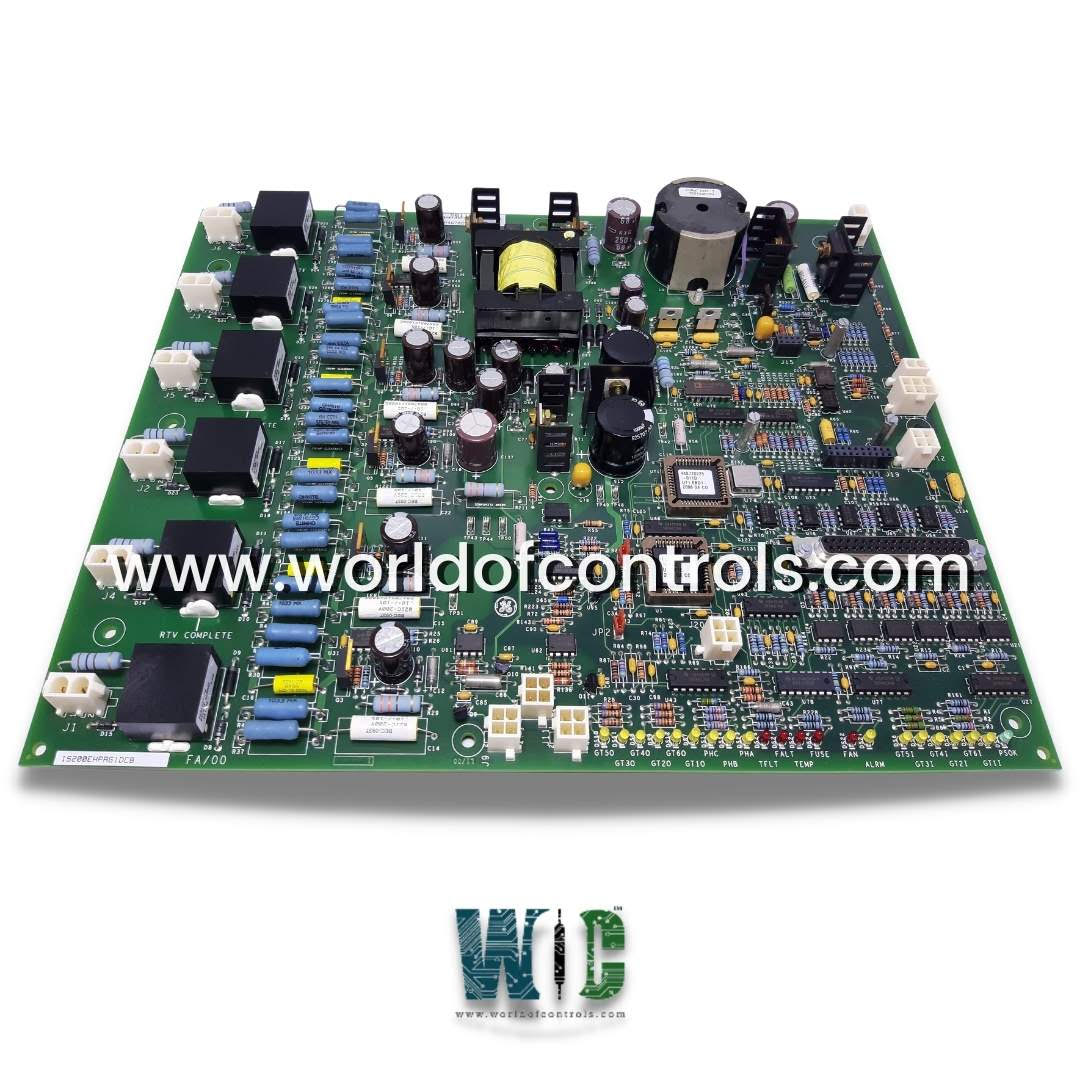
World Of Controls understands the criticality of your requirement and works towards reducing the lead time as much as possible.
IS200EHPAG1D - Exciter Gate Pulse Amplifier Board is available in stock which ships the same day.
IS200EHPAG1D - Exciter Gate Pulse Amplifier Board comes in UNUSED as well as REBUILT condition.
To avail our best deals for IS200EHPAG1D - Exciter Gate Pulse Amplifier Board, contact us and we will get back to you within 24 hours.
SPECIFICATIONS:
Part Number: IS200EHPAG1D
Manufacturer: General Electric
Series: EX2100
Microprocessor: Intel Celeron 650 MHz
Memory: 128 MB SDRAM
Operating system: QNX
Product Type: Exciter Gate Pulse Amplifier Board
Voltage Range: 14 to 32 V dc
Maximum Lead Resistance: 15 Ω
Storage temperature: -40 to 80° C
Operating temperature: 0 to 70° C
Technology: Surface mount
Size: 16.2 cm high x 8.6 cm
Repair: 3-7 Day
Availability: In Stock
Weight: 2 lbs
Country of Origin: United States
Manual: GEI-100532A
FUNCTIONAL DESCRIPTION:
IS200EHPAG1D is an Exciter Gate Pulse Amplifier Board manufactured and designed by General Electric as part of the EX2100 Series used in GE Excitation Control Systems. The IS200EHPA Gate Pulse Amplifier Board (EHPA) is a component of the 100 mm EX2100™ Excitation Control system. It processes gate commands from the ESEL to manage the firing of up to six Silicon Controlled Rectifiers (SCRs) on the Power Bridge. Additionally, it serves as an interface for monitoring current conduction, bridge airflow, and temperature. The EHPA’s functional model, highlighting its primary inputs and outputs, is illustrated in the accompanying diagram. Powered by a 125 V DC nominal source from the EPDM, the board features an onboard DC/DC converter to support SCR gating across the entire input voltage range. Status indicators, in the form of LEDs, provide visual feedback on various parameters, including EHPA power supply health, input gate commands from ESEL, SCR output signals, bridge current, line filter status, cooling fan operation, bridge temperature, alarms, and fault conditions.
GAT COMMAND INPUTS:
The EHPA receives six gate commands from the ESEL via a twisted-pair, multiconductor shielded cable. These commands are transmitted over differential pairs, where they are optically isolated, filtered, AC-coupled, and then directed to the Gate Pulse Amplifier (GPA). Each SCR has a dedicated GPA, ensuring independent operation. The EHPA also provides galvanic isolation between the gates of the individual SCRs.
SENSOR INPUTS:
The EHPA monitors conduction currents across all three phases of the bridge input. It functions as an interface between the Hall Effect sensors on the EXCS boards and the system controller. The EHPA supplies power to the EXCS and receives feedback signals from the EXCS, indicating the current flow status through each phase of the three-phase bridge input. These signals are received at connectors J9 and J10, where they are processed by the EHPA before transmitting the bridge status to the controller.
Bridge temperature is monitored via either an RTD (thermistor) sensor input or temperature switch input. For new exciters, only the RTD input is utilized, with jumpers on the EHPA disabling the temperature switch inputs. When retrofitting a bridge with an EX2100 control, the two temperature switch inputs are used to connect with the existing temperature switches on the bridge, and the RTD input is left disconnected to deactivate it. Both the RTD and temperature switch inputs are connected to the EHPA through J13.
Airflow sensors (fan rotation) detect loss of fan cooling in the bridge. One fan can be connected to the EHPA through J12. The EHPA accepts either a pulsed or dry-contact, normally open sensor input from the fan. The mode of signal detection is configured through the berg jumper JP2.
WOC has the largest stock of OEM Replacement Parts for GE Excitation Control Systems. We can also repair your faulty boards and supply unused and rebuilt boards backed up with a warranty. Our team of experts is available round the clock to support your OEM needs. Our team of experts at WOC is happy to assist you with any of your automation requirements. For pricing and availability on parts and repairs, kindly contact our team by phone or email.
How does the EHPA Board receive gate commands?
The EHPA receives gate commands from the ESEL through a twisted pair, multiconductor, and shielded cable. These signals are optically coupled, filtered, and AC-coupled before being sent to the Gate Pulse Amplifiers (GPAs), which control the firing of individual SCRs.
How does the EHPA Board handle current conduction monitoring?
The EHPA interfaces with Hall Effect sensors on the EXCS boards to monitor the conduction currents across the three-phase bridge input. It receives current status signals from the EXCS and sends the processed information to the system controller.
What type of temperature monitoring does the EHPA support?
The EHPA Board supports temperature monitoring through either an RTD (thermistor) sensor input or a temperature switch input. The RTD input is used for new exciters, while the temperature switch inputs are used when retrofitting an EX2100 control system to an existing bridge with temperature switches.